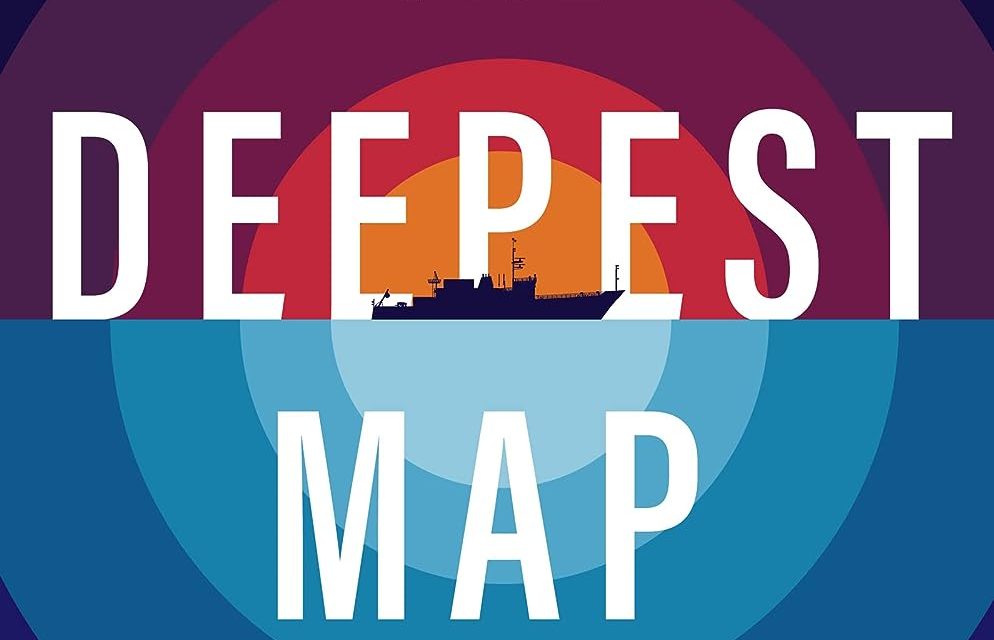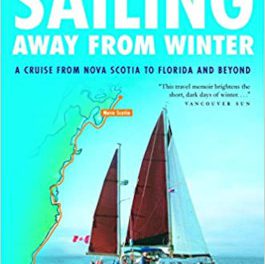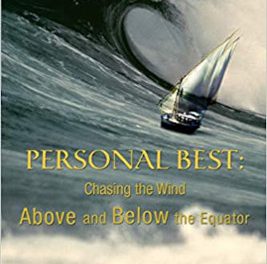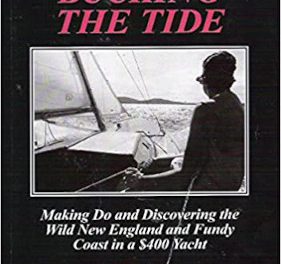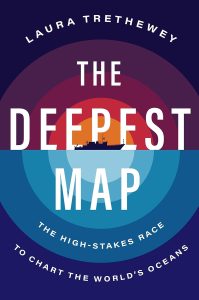
The Deepest Map: The High-Stakes Race to Chart the World’s Oceans by Laura Trethewey
Sailors don’t use “maps” for navigating, we use charts. So why review a book called The Deepest Map? The short answer is it can improve our understanding of the world over which we sail.
Nautical charts employ soundings to give a three-dimensional view of the ocean showing safe routes along with dangers from top to bottom. The deepest map represents the topography of the seafloor as a two-dimensional surface, using similar technology.
Until several radical discoveries in the mid-twentieth century showed the ocean bottom to be incredibly active, it was assumed to be mostly featureless. Since then, our understanding has stumbled along. In 2017, an international, collaborative project called Seabed 2030 formed to speed up the process and hopefully complete a map by the end of this decade. It’s an enormous task; currently only 15% has been mapped, most of it by individual countries in the 200-mile EEZ zone surrounding their coasts. Mapping in the open ocean is largely confined to areas of high shipping traffic or mining interests such as the Clarion Clipperton Zone in the eastern North Pacific.
In her book, Trethewey explores ways humans contribute to Seabed 2030, essentially a crowd-sourced project, from an Inuit village using sonar to map the changing bottom of its bay to SailDrone robots that could potentially replace human surveyors who use diesel powered ships. She sails on a mapping vessel out of Los Angeles to experience deep sea mapping firsthand.
Trethewey ties the book together with the saga of billionare private equity investor Victor Vescovo, whose quest to plunge to the bottoms of the Five Deeps of the world’s oceans is similar to climbing the 14 highest land peaks. Trethewey points out that the ocean is that now-rare place on earth where major breakthroughs “happen by accident all the time,” and “anything you encounter in the deep sea could be a first.” She illustrates this through Cassie Bongiovanni, a young mapper on Vescovo’s ship whose job is to pinpoint the deepest deeps within each ocean’s deepest trench to ensure he gets the record for his dives.
Human exploration has long been pointed towards the stars and not the ocean bottom. NASA’s budget in 2021 was $25.2 billion and NOAA’s only $5.4 billion. Yet the time is dawning when we may need that knowledge to save ourselves and life as we know it. Mapmaking has always accompanied exploration, and often been a precursor to exploitation. As we race to halt changes that are rapidly occurring in our environment, we need minerals that are surprisingly plentiful on the ocean floor if only we could get them out. In the end Trethewey doesn’t really give a satisfying prediction on Seabed 2030, but if it succeeds in its mission, it’s to be hoped that we will use the deepest map to protect the ocean and not just exploit it.
Trethewey, Laura. The Deepest Map: The High-Stakes Race to Chart the World’s Oceans. New York, NY: HarperWave, 2023.

